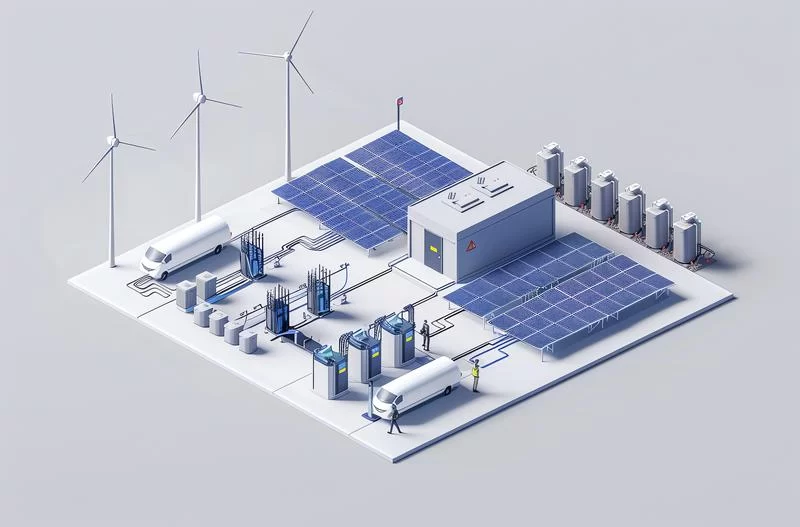Microgrid Energy Storage System: Boosting Distributed Power Efficiency & Reliability

Microgrid energy storage system is a kind of energy storage system with bi-directional control capability with distributed power supply in microgrid as the main object, which is the main source of energy in microgrid, and can be used as a back-up power source or as a kind of temporary power supply when the load is changing or when the grid is faulty. Microgrid energy storage system in the microgrid is mainly used in distributed power supply, energy storage battery, energy storage converter, electric vehicle charging and discharging.

Classification of energy storage system
Microgrid energy storage system can be divided into: compressed air energy storage, lithium-ion battery energy storage, supercapacitor energy storage, pumped storage and superconducting magnetic energy storage. Among them, compressed air energy storage, lithium-ion battery energy storage and pumped storage are relatively mature technologies, while supercapacitor energy storage technology is still in the development stage, superconducting magnetic energy storage technology is still in the research stage.
According to the application field can be divided into: microgrid energy storage system and microgrid-friendly (VSC) two kinds. Among them, VSC application field is mainly focused on smart grid, and microgrid-friendly (VSC) application field is mainly focused on smart microgrid.
Energy Storage Battery
Energy storage batteries are mainly used for DC buses in microgrids, mainly lead-acid batteries and lithium-ion batteries.
Lead-acid batteries are the most commonly used energy storage batteries with the advantages of low price, mature manufacturing process and relatively mature technology, and they are also widely used in microgrids. However, lead-acid batteries produce lead sulfate crystals during the charging and discharging process that can block the pores on the pole plates, affecting battery life. Moreover, lead-acid battery is a semi-closed system, and volume expansion occurs when the ambient temperature is lower than -10℃, which reduces its cycle life. Therefore, lead-acid batteries need to be insulated when applied in microgrids. Lithium-ion batteries have the advantages of high energy density, long cycle life, etc., and are more widely used in microgrids, but they are expensive and produce toxic substances that pollute the environment in the process of using them.
Energy storage converter
Energy storage converter is one of the most important equipments in microgrid, which can connect renewable energy power generation equipment and energy storage batteries in microgrid to AC power grid and provide stable DC power for microgrid. The energy storage converter generally consists of an inverter and an energy storage converter. The inverter is responsible for stabilizing the voltage and frequency in a specific range, while the storage converter is used to realize the conversion of voltage, frequency and active power. According to the voltage level, inverters can be categorized into two types: boost type and buck type, where the boost type inverters are mainly used in the DC bus of microgrids, while the buck type is mainly used in the DC side of photovoltaic power generation systems. In addition to realizing the control of distributed power sources and storage batteries, the energy storage converter can also serve as the hub of energy flow within the microgrid, monitor the microgrid operation status, and control the output power.
Electric Vehicle Charging and Discharging
Electric vehicles will produce a large amount of electricity in the process of use, if these electric energy can be stored, not only can improve the efficiency of electric vehicles, but also provide a certain amount of power support for the power grid, which is also the main purpose of the microgrid energy storage system applied to electric vehicle charging and discharging. The large amount of electric energy generated during the charging and discharging of electric vehicles can provide certain power support for the microgrid through charging stations or chargers. In the process of EV charging and discharging, its charging and discharging current can be used as a kind of distributed power in the microgrid, or as a temporary power supply to provide certain power support for the microgrid. At the same time, EV charging and discharging process can also form a complementary relationship with other distributed power sources in the microgrid, so as to improve the operating efficiency of the microgrid system. EV charging and discharging technology is a very important technology in the process of EV development and microgrid construction.
